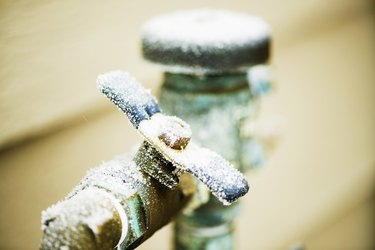Essential Advice to Protect Against Frozen Plumbing in Cold Weather
Essential Advice to Protect Against Frozen Plumbing in Cold Weather
Blog Article
The article down the page relating to How To Avoid Freezing Pipes is immensely enlightening. Check it out yourself and decide what you think about it.

Cold weather can wreak havoc on your pipes, specifically by freezing pipes. Here's just how to avoid it from occurring and what to do if it does.
Intro
As temperature levels decline, the danger of icy pipelines increases, possibly resulting in costly repair work and water damages. Comprehending just how to stop frozen pipes is critical for house owners in cool climates.
Avoidance Tips
Shielding susceptible pipes
Wrap pipes in insulation sleeves or use heat tape to safeguard them from freezing temperature levels. Focus on pipelines in unheated or outside areas of the home.
Home heating techniques
Keep interior areas properly heated up, particularly locations with pipes. Open cupboard doors to enable warm air to distribute around pipes under sinks.
How to identify frozen pipelines
Search for decreased water flow from taps, uncommon odors or noises from pipelines, and noticeable frost on subjected pipes.
Long-Term Solutions
Architectural changes
Take into consideration rerouting pipelines away from outside walls or unheated locations. Add extra insulation to attic rooms, basements, and crawl spaces.
Upgrading insulation
Buy top notch insulation for pipes, attics, and wall surfaces. Appropriate insulation helps preserve consistent temperatures and reduces the danger of icy pipes.
Safeguarding Exterior Pipes
Garden pipes and exterior faucets
Separate and drain garden hoses before wintertime. Install frost-proof spigots or cover outside taps with insulated caps.
Comprehending Frozen Pipes
What triggers pipelines to ice up?
Pipelines ice up when subjected to temperatures listed below 32 ° F (0 ° C) for extended periods. As water inside the pipes ices up, it broadens, putting pressure on the pipe wall surfaces and possibly creating them to burst.
Threats and problems
Icy pipes can lead to supply of water interruptions, property damages, and costly repair work. Burst pipelines can flood homes and cause substantial structural damage.
Signs of Frozen Water Lines
Identifying icy pipes early can stop them from bursting.
What to Do If Your Pipelines Freeze
Immediate actions to take
If you think frozen pipelines, keep faucets open up to ease stress as the ice melts. Make use of a hairdryer or towels taken in hot water to thaw pipes slowly.
Final thought
Protecting against frozen pipes needs positive actions and quick responses. By recognizing the causes, signs, and safety nets, homeowners can protect their plumbing throughout winter.
5 Ways to Prevent Frozen Pipes
Drain Outdoor Faucets and Disconnect Hoses
First, close the shut-off valve that controls the flow of water in the pipe to your outdoor faucet. Then, head outside to disconnect and drain your hose and open the outdoor faucet to allow the water to completely drain out of the line. Turn off the faucet when done. Finally, head back to the shut-off valve and drain the remaining water inside the pipe into a bucket or container. Additionally, if you have a home irrigation system, you should consider hiring an expert to clear the system of water each year.
Insulate Pipes
One of the best and most cost-effective methods for preventing frozen water pipes is to wrap your pipes with insulation. This is especially important for areas in your home that aren’t exposed to heat, such as an attic. We suggest using foam sleeves, which can typically be found at your local hardware store.
Keep Heat Running at 65
Your pipes are located inside your walls, and the temperature there is much colder than the rest of the house. To prevent your pipes from freezing, The Insurance Information Institute suggests that you keep your home heated to at least 65 degrees, even when traveling. You may want to invest in smart devices that can keep an eye on the temperature in your home while you’re away.
Leave Water Dripping
Moving water — even a small trickle — can prevent ice from forming inside your pipes. When freezing temps are imminent, start a drip of water from all faucets that serve exposed pipes. Leaving a few faucets running will also help relieve pressure inside the pipes and help prevent a rupture if the water inside freezes.
Open Cupboard Doors
Warm your kitchen and bathroom pipes by opening cupboards and vanities. You should also leave your interior doors ajar to help warm air circulate evenly throughout your home.

Do you like reading about How To Avoid Freezing Pipes? Put a short review down below. We will be delighted to know your thoughts about this blog. In hopes to see you back again later on. Sharing is good. You never know, you may just be helping someone out. I am grateful for your time. Revisit us soon.
Here Report this page